Geography > QUESTIONS & ANSWERS > University of British ColumbiaATSC 113Flying Midterm Quiz Score: 30 out of 33 ( DOWNLOAD TO SCORE A (All)
University of British ColumbiaATSC 113Flying Midterm Quiz Score: 30 out of 33 ( DOWNLOAD TO SCORE A ) CORRECT ANSWERS HAVE BEEN SHOWN
Document Content and Description Below
5/19/2019 Flying Weather Midterm: ATSC 113 971/98A Applied Meteorology https://canvas.ubc.ca/courses/30630/quizzes/108261 1/19 Flying Weather Midterm Due May 19 at 10pm Points 33 Questions 33 Avai... lable May 18 at 5am May 19 at 10pm 1 day Time Limit 50 Minutes Attempt History Attempt Time Score LATEST Attempt 1 48 minutes 30 out of 33 æ Correct answers are hidden. Score for this quiz: 30 out of 33 Submitted May 19 at 5:36pm This attempt took 48 minutes. Incorrect Incorrect Question 1 0 / 1 pts Mountain waves can form in the atmosphere if the air is ______ and winds are _____ . statically unstable / perpendicular to the mountain range statically unstable / parallel to the mountain range statically neutral / parallel to the mountain range statically stable / parallel to the mountain range statically stable / perpendicular to the mountain range Question 2 1 / 1 pts Which statement is FALSE?5/19/2019 Flying Weather Midterm: ATSC 113 971/98A Applied Meteorology https://canvas.ubc.ca/courses/30630/quizzes/108261 2/19 CAT often has large horizontal extent CAT is often found in thunderstorms CAT often has thin vertical extent CAT often forms as breaking atmospheric waves CAT is created with wind shear Question 3 1 / 1 pts Obstacle wake turbulence can be expected downwind of a mountain to not usually be associated with mountains upwind of a lake with breaking waves upwind of a mountain downwind of a lake with breaking waves Question 4 1 / 1 pts This type of ice forms on aircraft flying through clouds or rain where air temperature is –15 to –20°C. For this type of ice, air pockets are trapped between the frozen drops, scattering sunlight to make the ice look white/milky: Frost5/19/2019 Flying Weather Midterm: ATSC 113 971/98A Applied Meteorology https://canvas.ubc.ca/courses/30630/quizzes/108261 3/19 Mixed ice Clear ice Rime ice Black ice Question 5 1 / 1 pts (LG4a). The most violent stage of a thunderstorm cell, when there are both up and downdrafts, is: cumulus residue mature dissipating cirrus Question 6 1 / 1 pts The type of storm that is rotating as a mesocyclone is called a/an dust devil mesosphere airmass thunderstorm5/19/2019 Flying Weather Midterm: ATSC 113 971/98A Applied Meteorology https://canvas.ubc.ca/courses/30630/quizzes/108261 4/19 supercell mammatus cloud Question 7 1 / 1 pts Which is FALSE? If you flew into a thunderstorm, the convective turbulence would likely cause your aircraft to: experience violent shaking experience intense yawing motions experience engine failure experience intense rolling and pitching motions be violently pushed up and down to different altitudes Question 8 1 / 1 pts Which statement is TRUE? The gust front forms when downburst air hits the ground and spreads out. is the bottom edge of the downburst. is what pushes the thunderstorm along. forms as the outside wall of a multivortex tornado. is a largescale (synoptic) weather system associated with anticyclones.5/19/2019 Flying Weather Midterm: ATSC 113 971/98A Applied Meteorology https://canvas.ubc.ca/courses/30630/quizzes/108261 5/19 Question 9 1 / 1 pts Lightning is the weather phenomenon most hazardous to aviation is not usually a hazard to aircraft causes fuel tanks to explode on modern composite aircraft is the another word for Pstatic affects only pilots flying IFR through thunderstorms Question 10 1 / 1 pts Which is FALSE? Hail can break windscreens accumulate on aircraft causing the aircraft weight to increase occur outside of the visible thunderstorm cloud dent the leading edge of aircraft wings damage aircraft when parked outside on the ground Question 11 1 / 1 pts It is safe to fly near a tornado, but only when the tornado intensity is roughly:5/19/2019 Flying Weather Midterm: ATSC 113 971/98A Applied Meteorology https://canvas.ubc.ca/courses/30630/quizzes/108261 6/19 EF5 (never safe to fly near a tornado) EF3 EF2 EF4 Question 12 1 / 1 pts Which raincloud is likely to be most turbulent? nimbocirrus altonimbus cumulonimbus nimbostratus nimbofractus Question 13 1 / 1 pts Which cloud is NOT associated with mountains? anabatic cumulus fumulus orographic thunderstorms5/19/2019 Flying Weather Midterm: ATSC 113 971/98A Applied Meteorology https://canvas.ubc.ca/courses/30630/quizzes/108261 7/19 banner lenticular Incorrect Incorrect Question 14 0 / 1 pts If low clouds cover 2/8 of the sky and midlevel clouds (not hidden behind the low clouds) actually cover 3/8 of the sky, then the coverage of midlevel clouds would be reported as ___? 3/8. 4/8. 5/8. 2/8. 1/8. Question 15 1 / 1 pts Which statement is correct regarding a cloud ceiling for aviation? No aircraft is allowed to fly above the cloud ceiling. The altitude of clouds below 20,000 feet altitude that cover less than half of the sky is a cloud ceiling. Cloud tops stop rising when they hit the cloud ceiling.5/19/2019 Flying Weather Midterm: ATSC 113 971/98A Applied Meteorology https://canvas.ubc.ca/courses/30630/quizzes/108261 8/19 To be valid at all locations, cloud ceiling is given as an altitude above mean sea level. Cloud ceiling is the height above ground of the lowest layer of clouds reported as broken or overcast. Question 16 1 / 1 pts If someone uses the word “visibility”, with no preceding adjective, to what are they referring? Vertical visibility Overcast Slant visibility Oblique visibility Horizontal visibility Question 17 1 / 1 pts Which glyph represents freezing drizzle?5/19/2019 Flying Weather Midterm: ATSC 113 971/98A Applied Meteorology https://canvas.ubc.ca/courses/30630/quizzes/108261 9/19 glyph d glyph e glyph a glyph g glyph b glyph c glyph i glyph h glyph f5/19/2019 Flying Weather Midterm: ATSC 113 971/98A Applied Meteorology https://canvas.ubc.ca/courses/30630/quizzes/108261 10/19 Question 18 1 / 1 pts What are the two primary variables which determine whether takeoff and landing can be VFR or must be IFR? Ceiling and visibility Visibility and precipitation Cloudbase level and cloud coverage Cloud coverage and visibility Ceiling and cloud coverage Question 19 1 / 1 pts The night is clear and the winds are calm. The most likely type of fog that would form over land is steam radiation precipitation convection advection Question 20 1 / 1 pts What aspect of blowing snow would likely be most hazardous to aviation?5/19/2019 Flying Weather Midterm: ATSC 113 971/98A Applied Meteorology https://canvas.ubc.ca/courses/30630/quizzes/108261 11/19 fast winds ice accumulation on the aircraft obscured landmarks cold temperatures buildup of static electric charge on the aircraft Question 21 1 / 1 pts As you gain altitude, air pressure (Hints: Linear = straight line. Exponential = curved line.): increases exponentially increases linearly is roughly constant decreases exponentially decreases linearly Question 22 1 / 1 pts Many light generalaviation airplanes can easily fly to altitudes of 13,000 ft. At that altitude in an unpressurized aircraft, which symptom would you NOT likely feel? dizziness5/19/2019 Flying Weather Midterm: ATSC 113 971/98A Applied Meteorology https://canvas.ubc.ca/courses/30630/quizzes/108261 12/19 improved coordination impaired judgement euphoria drowsiness Question 23 1 / 1 pts For density altitude that is higher than normal, which is FALSE: airplane engines generate less power airplane wings get less lift airplane propellers generate less thrust airplanes need shorter runways to take off airplanes cannot fly as high above sea level Question 24 1 / 1 pts The wind is 50 km/hour coming from 10° angle relative to the direction the aircraft is pointing. The crosswind component (km/hour) with respect to the aircraft is:5/19/2019 Flying Weather Midterm: ATSC 113 971/98A Applied Meteorology https://canvas.ubc.ca/courses/30630/quizzes/108261 13/19 20 50 0 25 10 Question 25 1 / 1 pts Which is FALSE? Hazardous wind shear at aerodromes can be caused by: highpressure centers fronts5/19/2019 Flying Weather Midterm: ATSC 113 971/98A Applied Meteorology https://canvas.ubc.ca/courses/30630/quizzes/108261 14/19 boras chinooks channeling of winds through valleys Question 26 1 / 1 pts When thermals are aligned in rows, they are sometimes visible due to the cloud streets KelvinHelmholtz (KH) billows special 3D glasses that most glider pilots wear squall lines arc cloud Question 27 1 / 1 pts Two atmospheric layers where average temperature decreases with increasing altitude are: stratosphere & mesosphere troposphere & stratosphere mesosphere & thermosphere stratosphere & thermosphere5/19/2019 Flying Weather Midterm: ATSC 113 971/98A Applied Meteorology https://canvas.ubc.ca/courses/30630/quizzes/108261 15/19 troposphere & mesosphere Question 28 1 / 1 pts Consider overcast conditions with fast wind. The static stability that is likely for these conditions is: standard stable normal unstable neutral Question 29 1 / 1 pts Which type of turbulence is made by humans, and would not otherwise occur in nature? forced aircraft wake mechanical thermal convective5/19/2019 Flying Weather Midterm: ATSC 113 971/98A Applied Meteorology https://canvas.ubc.ca/courses/30630/quizzes/108261 16/19 Question 30 1 / 1 pts Thunderstorms are NOT likely along ____ . warm fronts dry lines occluded fronts squall lines cold fronts Question 31 1 / 1 pts Widespread stratiform cloud layers (and the associated IFR conditions and possibly icing in winter) are found relative to which type of surface front? behind of a cold front ahead of a warm front along a cold front ahead of a cold front behind a warm front Question 32 1 / 1 pts Suppose a 0.5 km thick layer of dry air has a temperature of 0 °C at the top and 6 °C at the bottom. What is its static stability index, S (°C/km)?5/19/2019 Flying Weather Midterm: ATSC 113 971/98A Applied Meteorology https://canvas.ubc.ca/courses/30630/quizzes/108261 17/19 4 6 2 2 6 4 Incorrect Incorrect Question 33 0 / 1 pts5/19/2019 Flying Weather Midterm: ATSC 113 971/98A Applied Meteorology https://canvas.ubc.ca/courses/30630/quizzes/108261 18/19 Air with static stability index of S = 2 blowing over a mountain due to a wind speed of M = 40 km/hour. If the width of the mountain range is 200 km, then the Froude number for mountain waves is Fr = ___ . 3 1.0 0.2 2 0.55/19/2019 Flying Weather Midterm: ATSC 113 971/98A Applied Meteorology https://canvas.ubc.ca/courses/30630/quizzes/108261 19/19 Quiz Score: 30 out of 33 [Show More]
Last updated: 1 year ago
Preview 1 out of 19 pages
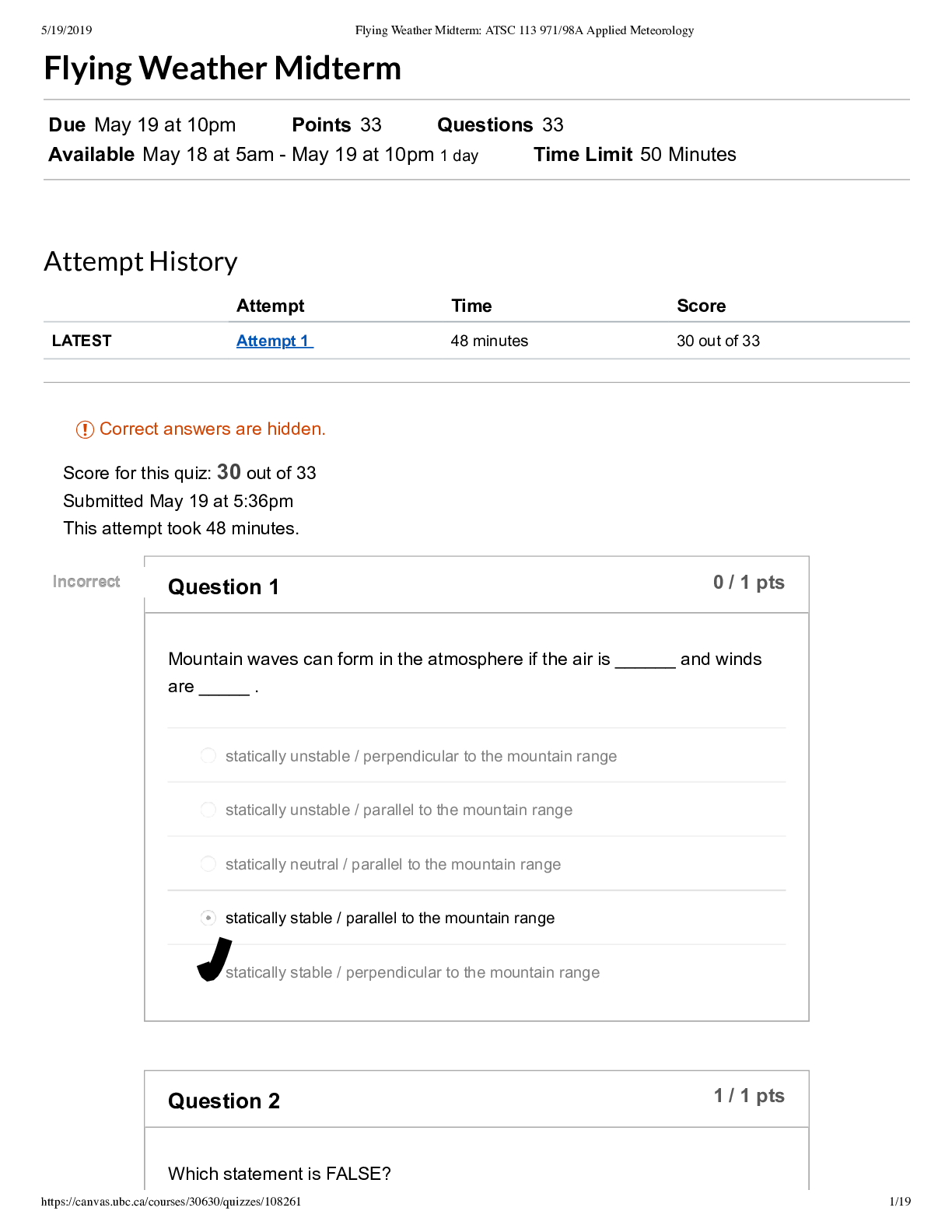
Buy this document to get the full access instantly
Instant Download Access after purchase
Add to cartInstant download
We Accept:

Reviews( 0 )
$11.00
Document information
Connected school, study & course
About the document
Uploaded On
Jun 12, 2021
Number of pages
19
Written in
Additional information
This document has been written for:
Uploaded
Jun 12, 2021
Downloads
0
Views
41

.png)


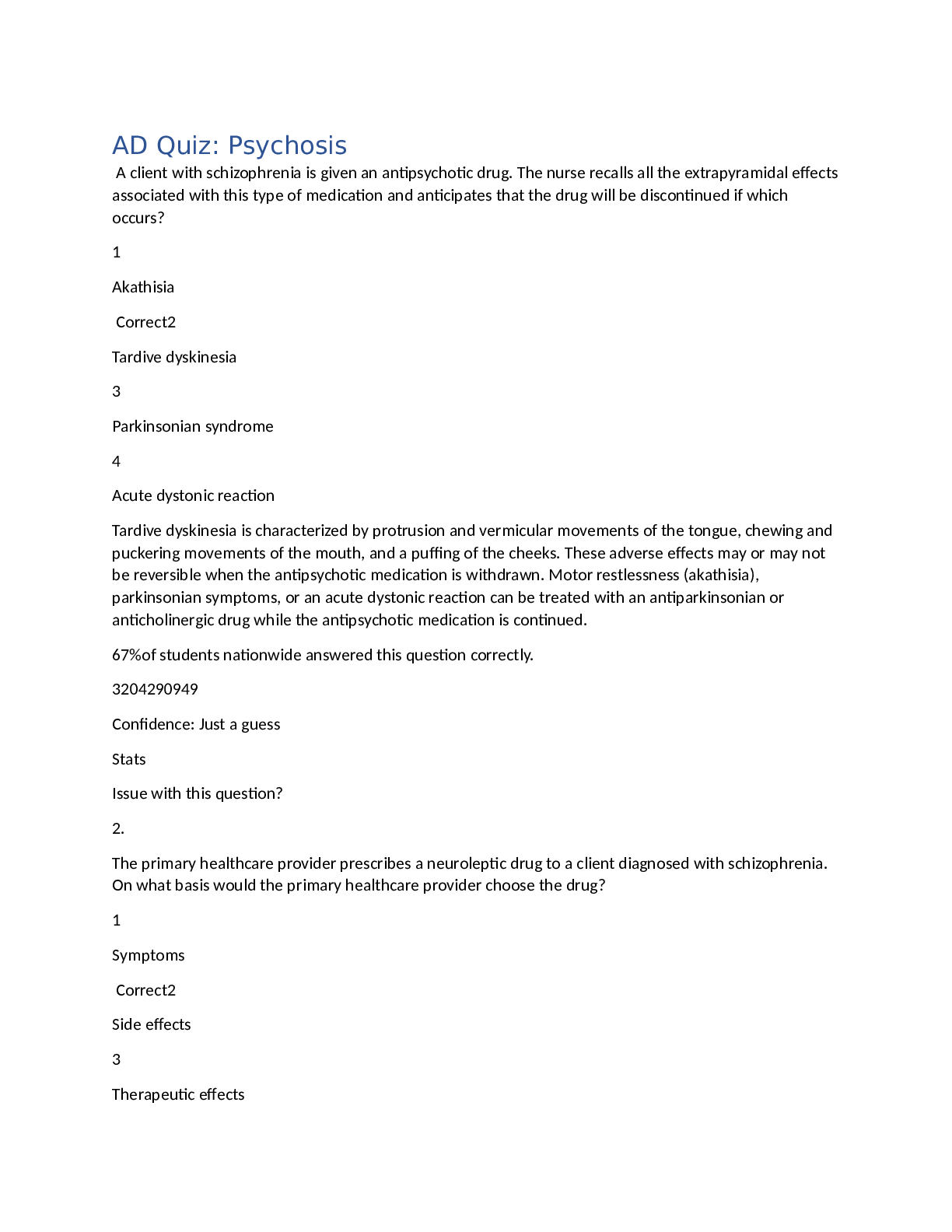
.png)
.png)
.png)
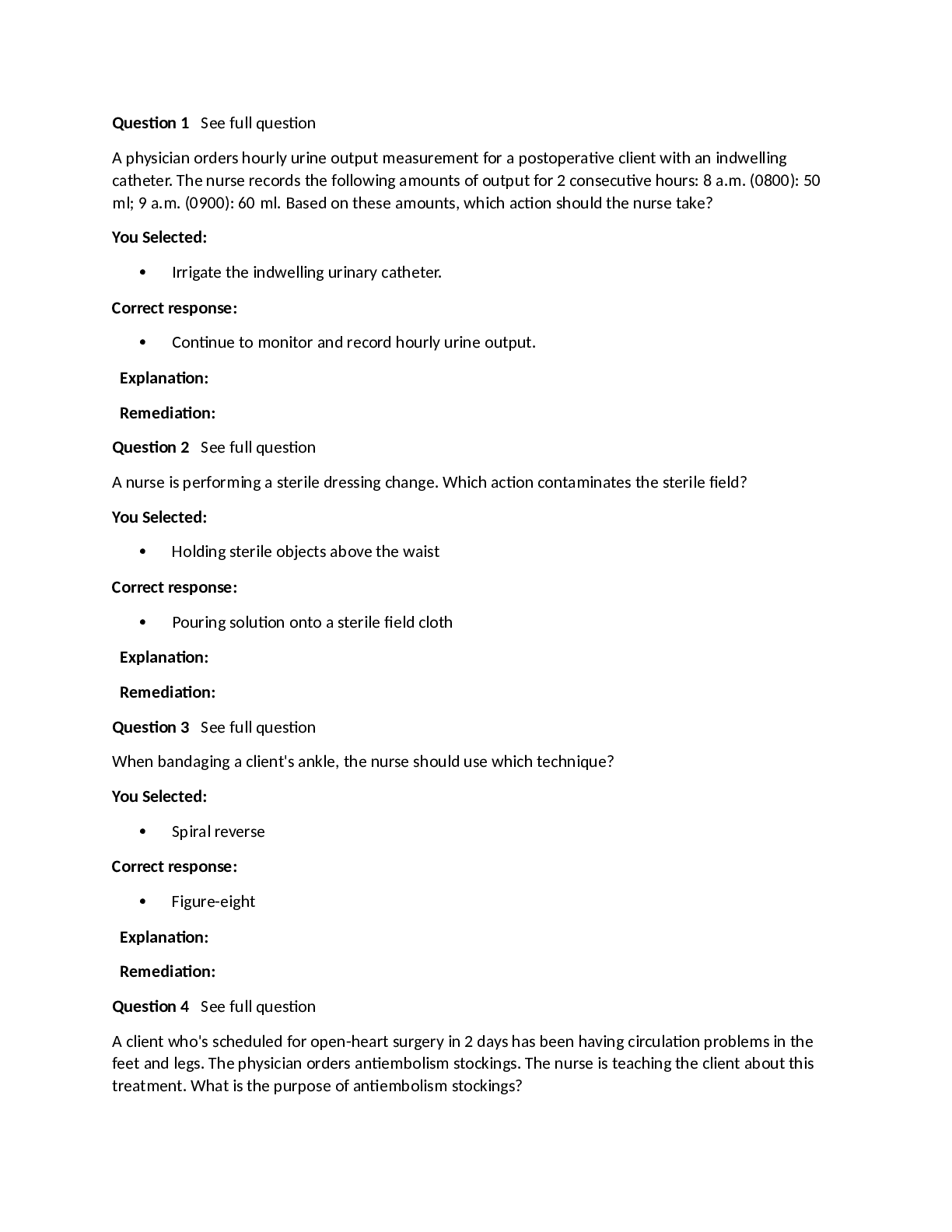




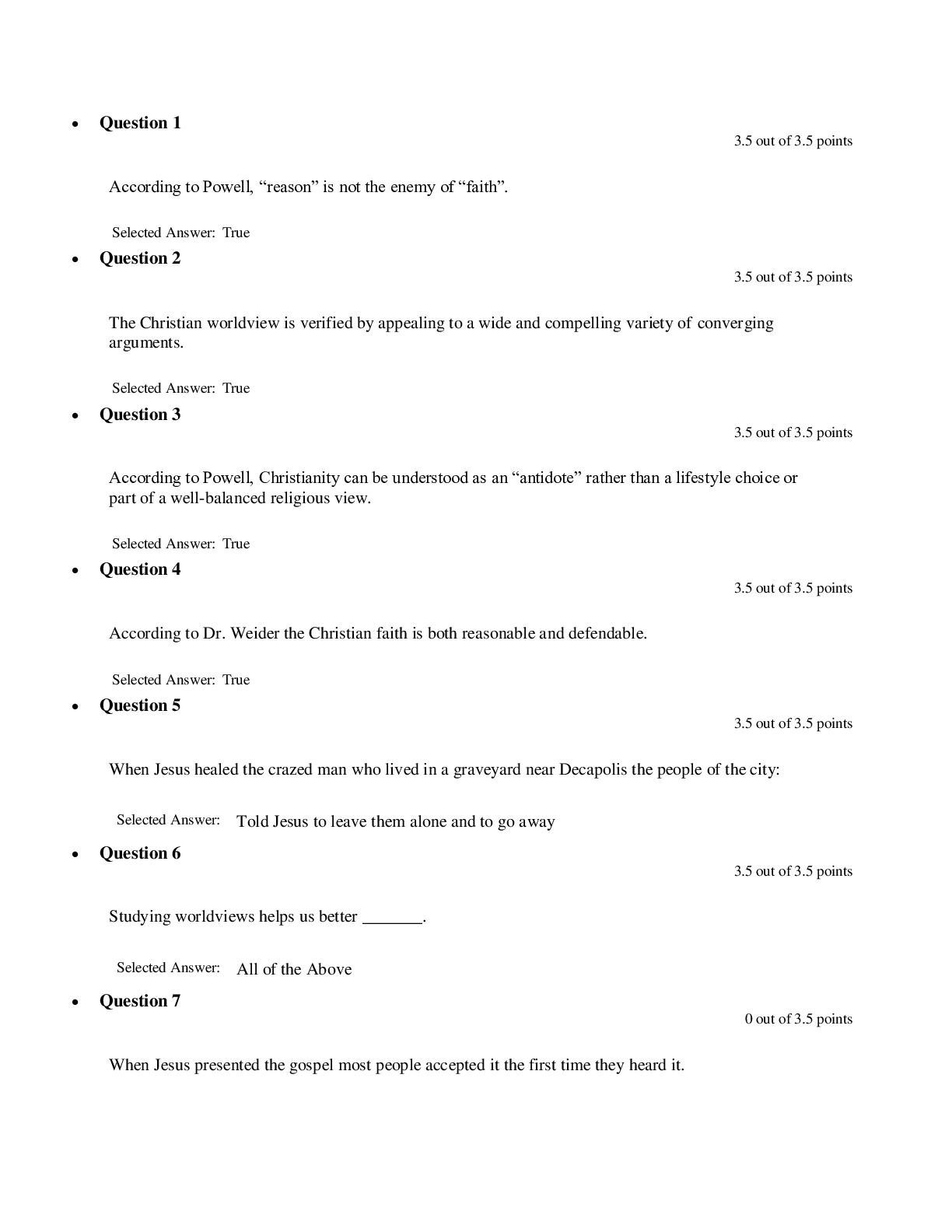

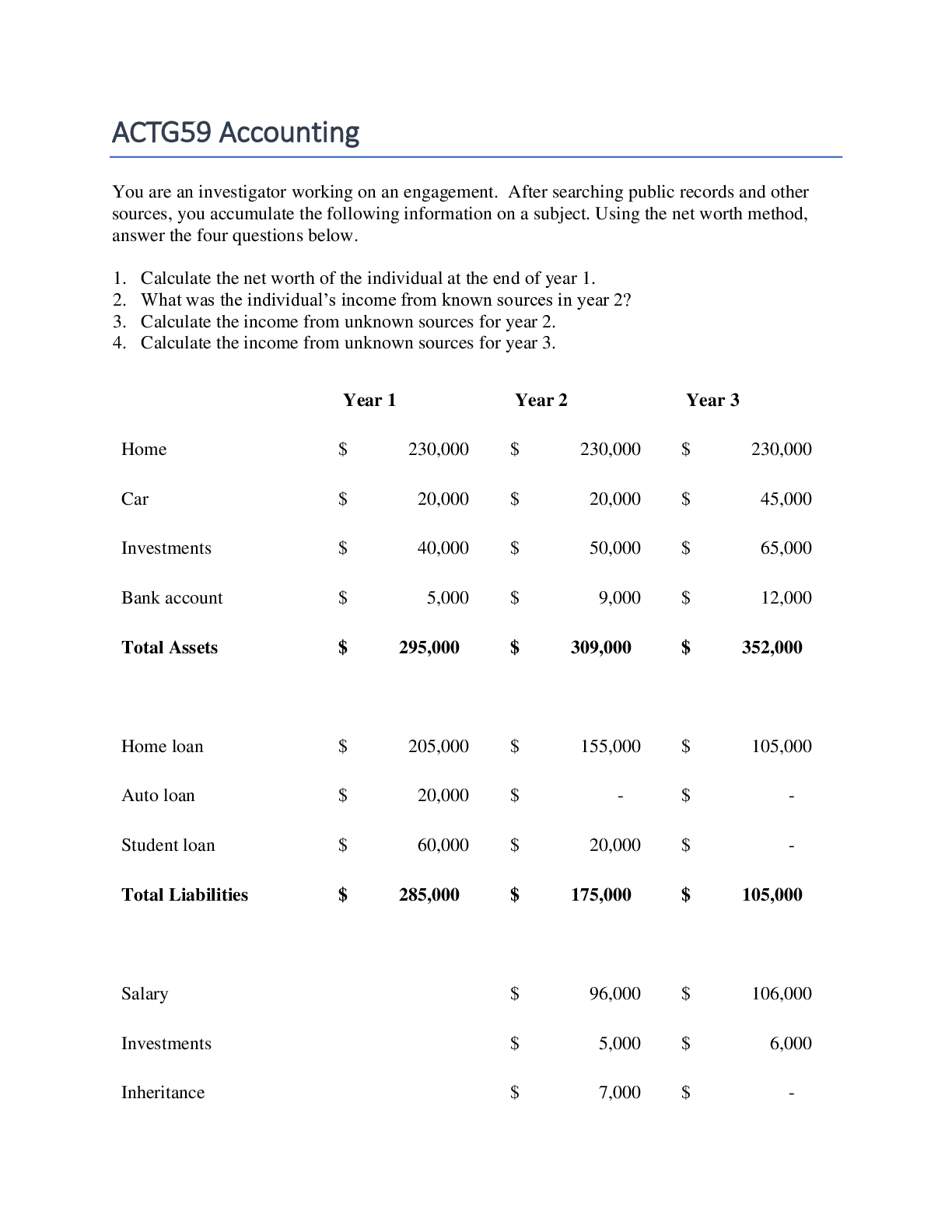


 Questions and Answers with Explanations, 100% Correct, Download to Score A.png)
 Questions and Answers (latest Update), 100% Correct, Download to Score A.png)
, 100% Correct, Download to Score A.png)
, 100% Correct, Download to Score A.png)
, 100% Correct, Download to Score A.png)
 Questions and Answers (latest Update), 100% Correct, Download to Score A.png)

